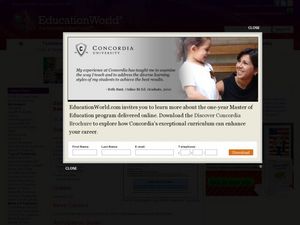Foreign Policy Research Institute
A Geography Lesson
Fewer and fewer people have a strong grasp of world geography, but this activity helps students understand geopolitics by creating their own original historical map. The activity requires selecting a country from the list provided,...
Curated OER
Symbol Minds
Students examine the fears and frustrations of citizens in the tolerant Muslim nation of Indonesia during the holy month of Ramadan. They explore the symbols used in various world religions and create 3-dimensional displays for a class.
Curated OER
Creative Expressions: Making Puppets
Students are introduced to the very basic geography of Indonesia. In groups, they examine the different types of puppets and decide on which one to make. They travel between various stations to complete their puppet in which they use...
Curated OER
Lori Schmidt's Lovely Lesson
Students color code a world map by region to show the different amphibians and reptiles that live there. They discuss the Nile Crocodile, Snapping Turtle, Komodo Dragon, Indian Python, and Lacertidae. When completed, they create a key...
Curated OER
Zoo Welcomes Baby Animals
Students engage in activities to gain a better understanding of endangered animals. In these animal lessons, students use vocabulary and comprehension skills to gain a better understanding of endangered animals. They also watch video...
Curated OER
Botany: Irrigating of Rice
Fourth graders discover agriculture by researching the irrigation of rice. For this farming lesson, 4th graders read about the different methods of rice farming and create an illustration for each different action. Students describe...
Curated OER
Studies of the Eastern Worlds: Cultural Maps
Seventh graders look for similarities and differences in the culture of Eastern World countries by looking at the art from each country. They test their hypothesis and assumptions through further research in the media center. Finally...








